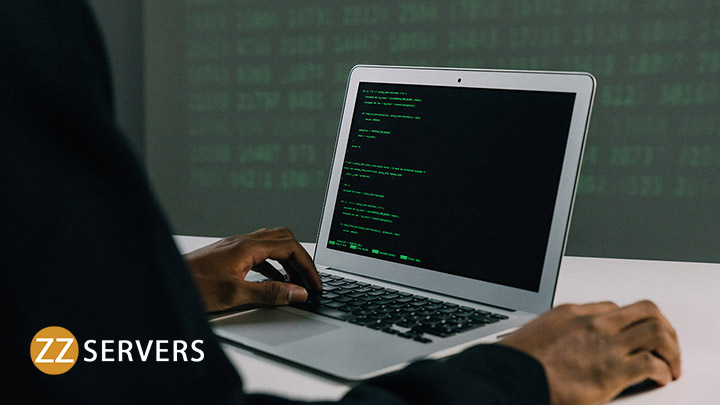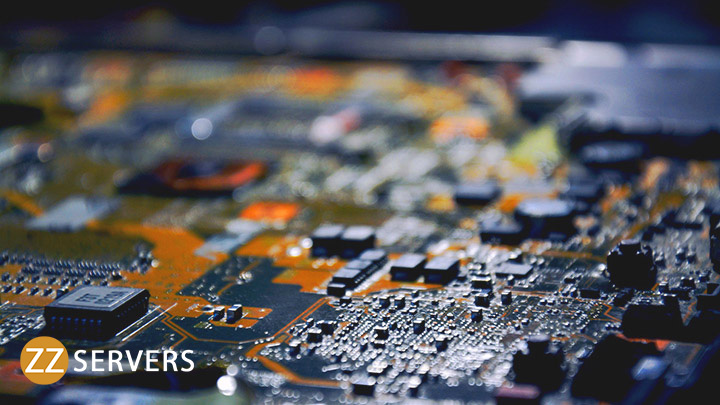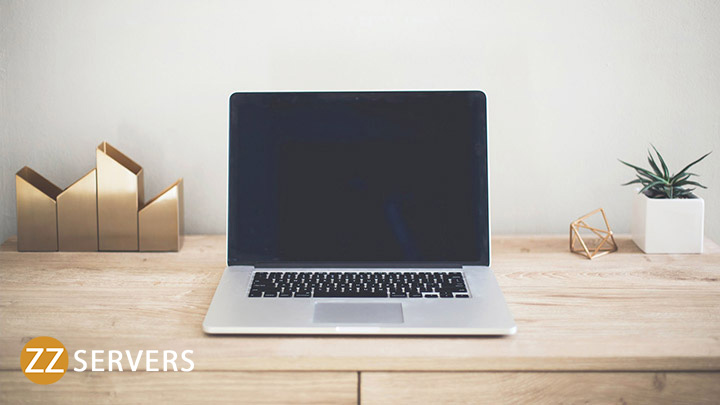Desktop as a Service (DaaS) is a cloud-based solution that delivers virtual desktops to any device, enabling secure remote work from anywhere. With DaaS, organizations can say goodbye to the hassles of traditional on-premise desktop management. The cloud provides fully-configured desktop environments alongside ongoing maintenance like updates and backups.
Employees gain frictionless access to the applications and data they need to be productive outside the office. It benefits from simplified management without the cost of hardware refreshes or upgrades. Make remote work a seamless reality with DaaS, which streamlines workflows by providing consistent desktop experiences everywhere, every time.
What is Desktop as a Service (DaaS)
Desktop as a Service (DaaS) is a cloud computing solution that delivers virtual desktops to users through a service provider. With DaaS, you can access your Desktop from anywhere, using any device with an internet connection. The service provider handles all the backend management, including maintenance, updates, and data storage. This means you don’t have to worry about hardware or software issues, as the provider handles everything.
DaaS operates on a self-service model, where you can easily provision and manage your virtual desktops. It utilizes cloud computing and software-as-a-service (SaaS) principles, allowing you to have on-demand access to your desktop environment. The service provider ensures the infrastructure is scalable, so you can easily add or remove desktops per your requirements.
One of the key benefits of DaaS is its centralized data storage. Your data is securely stored in a database, reducing the risk of data loss in case of device theft or failure. The service provider also handles database administration, ensuring your data is backed up and protected.
To access your virtual Desktop, you can use a web browser or dedicated software provided by the service provider. The provider may also offer APIs, allowing you to integrate your virtual Desktop with other applications or services.
Advantages of DaaS
DaaS offers several advantages that make it an attractive option for businesses.
It provides cost efficiency by eliminating the need for upfront investments in hardware and infrastructure.
DaaS offers scalability, allowing businesses to add or remove desktops as needed easily.
Enhanced security, accessibility, flexibility, and simplified management are additional benefits that DaaS brings to the table.
Cost Efficiency
How does Desktop as a Service (DaaS) offer cost efficiency?
DaaS provides several advantages that contribute to its cost-effective nature. One of the main factors is the elimination of infrastructure costs. When you opt for DaaS, you don’t need to invest in expensive hardware or servers because a third-party provider provides the service.
Additionally, DaaS reduces the need for in-house IT staff to handle tasks such as database management, data processing, data migration, backups, maintenance, and performance monitoring. These responsibilities are taken care of by the DaaS provider, saving you both time and money.
DaaS operates on a subscription-based model, allowing you to pay only for the resources you use. This scalability ensures that you are paying enough for used resources. With serverless computing, you can further optimize cost efficiency by paying for computing power only when it’s needed, without the need to maintain and manage servers.
Scalability
When considering the advantages of Desktop as a Service (DaaS), scalability is a key benefit. DaaS offers the ability to easily scale your desktop infrastructure up or down to meet your changing needs.
With a DaaS provider, you can quickly add or remove virtual desktops without the need to purchase and set up new hardware or software. This scalability is possible because DaaS leverages the power of cloud computing. The service provider manages the backend infrastructure, including servers, storage, and databases, allowing you to focus on your applications and users.
Whether you need to expand your workforce or scale back during slow periods, DaaS provides the flexibility and control to adjust your desktop environment accordingly.
Enhanced Security
To enhance security, DaaS offers centralized data storage and advanced backend security measures. With DaaS, your data is stored in a centralized location, reducing the risk of data loss in case of device theft.
Here are some of the enhanced security features of DaaS:
- Data Encryption: Your data is encrypted to ensure it remains secure and protected from unauthorized access.
- Access Controls: DaaS lets you control who’s accessing your data, ensuring only authorized users can view and modify it.
- Activity Monitoring: DaaS providers monitor user activity to detect suspicious behavior or unauthorized access attempts.
- Audit Logging: DaaS records all user activities, allowing you to track and review any changes made to your data.
With encryption at rest and in transit, as well as robust key management practices, DaaS ensures that your data is always protected, giving you peace of mind regarding the security of your information.
Accessibility and Flexibility
With DaaS, you can conveniently access your virtual Desktop from anywhere, anytime, allowing for increased accessibility and flexibility in your work. Desktop as a Service (DaaS) utilizes virtualization and networking technologies to provide a virtual desktop that can be accessed through a web browser or software. This means that you aren’t tied to a specific physical location or device.
Whether working from home, on the go, or at the office, your virtual Desktop is always accessible. DaaS also offers flexibility in terms of device compatibility, supporting various operating systems and device types.
DaaS relieves you from the burden of desktop administration and monitoring, as the service provider handles these tasks. This frees up your time and resources, allowing you to focus on your work and increase productivity.
Simplified Management
You can simplify management and enjoy the advantages of DaaS by allowing a service provider to handle backend tasks, such as maintenance, updates, and data storage, freeing up your time and resources.
With DaaS, you can benefit from simplified management in the following ways:
- Infrastructure Management: The service provider manages the infrastructure, including servers, storage, and networking, eliminating the need to invest in expensive hardware.
- Testing Environments: DaaS allows you to quickly create and manage multiple testing environments, enabling efficient software development and testing processes.
- Automated Backups: Your data is automatically backed up by the service provider, ensuring that your important files are protected in case of mishaps.
- Disaster Recovery and High Availability Setups: DaaS providers offer robust disaster recovery and high availability setups, minimizing downtime and ensuring continuous access to your desktops.

How Does DaaS Work
Understanding the operation of DaaS involves exploring how virtual desktops are delivered and managed by a service provider. With DaaS, the cloud service provider hosts the infrastructure, network resources, and storage in the cloud. The virtual Desktop is then streamed to your device, which can be accessed through a web browser or software.
One advantage of DaaS is that it allows for faster deployment and decommissioning of active end users. This means you can quickly get up and running with a virtual desktop and easily remove access when it’s no longer needed. Additionally, DaaS offers increased device flexibility, supporting various operating systems and device types.
Regarding data integration, application development, and testing, DaaS provides a centralized environment where these tasks can be performed. This can improve efficiency and collaboration among development teams.
DaaS also offers high availability and uptime, ensuring that your virtual Desktop is accessible whenever you need it. Response times are optimized to provide a smooth user experience, even for graphics-intensive applications.
Regarding security and backup, DaaS providers typically offer encryption to protect your data and regular backup processes to safeguard against data loss. They may also provide serverless computing options, allowing you to run applications without worrying about managing servers.
DaaS vs VDI: Understanding the Differences
Now, let’s delve into the differences between DaaS and VDI to gain a clear understanding of their distinctions.
DaaS (Desktop as a Service)
- DaaS delivers virtual desktops over the Internet through a service provider.
- Service providers handle backend management, including maintenance, backup, updates, and data storage.
- DaaS offers scalability, allowing businesses to add or remove users as needed easily.
- It integrates well with Platform as a Service (PaaS), enabling seamless integration with other cloud-based applications.
VDI (Virtual Desktop Infrastructure)
- VDI hosts Desktop operating systems on endpoint devices from a centralized server, requiring significant infrastructure investment.
- Businesses must manage backup strategies, migration tools, and disaster recovery plans.
- VDI allows for greater control and customization of desktop environments.
- It supports high concurrency, making it suitable for industries with demanding computing needs.
Understanding the differences between DaaS and VDI is crucial for businesses looking to implement a virtual desktop solution. DaaS offers a more cost-effective and scalable approach, with backend management handled by the service provider. On the other hand, VDI provides greater control and customization but requires businesses to invest in their infrastructure and manage backup and disaster recovery. Consider your specific needs, scalability requirements, and budget when deciding between DaaS and VDI.
Why is DaaS Important for Business
DaaS offers businesses a cost-effective and scalable solution for virtual desktops, providing numerous benefits such as simplified management and increased flexibility.
One of the key reasons why DaaS is important for business is its ability to simplify management. With DaaS, you no longer have to worry about managing the infrastructure, network resources, and storage required for virtual desktops. This responsibility is taken care of by the cloud service provider, allowing you to focus on other important aspects of your business.
Additionally, DaaS allows for increased flexibility. You can easily scale up or down the number of virtual desktops based on your business needs without significant upfront investments in hardware or software. This flexibility is particularly useful for businesses with fluctuating demands or seasonal peaks.
DaaS enables businesses to leverage the power of distributed databases and data analytics. You can easily access and analyze data from multiple sources, perform complex database queries, and test development environments without expensive hardware or software installations.
Popular cloud service providers such as Amazon Web Services, Microsoft Azure, Google Cloud Platform, IBM Cloud, and Oracle Cloud offer DaaS solutions that can cater to your specific business requirements.
Challenges in Implementing DaaS
Implementing Desktop as a Service (DaaS) can come with its challenges.
One of the main concerns is security, as data is stored in a centralized location and accessed through the Internet.
Network dependency is another issue, as a stable and reliable internet connection is crucial for seamless access to virtual desktops.
Customization and user experience may also be a challenge, as users might have specific preferences and requirements that need to be addressed.
There may be initial setup costs involved in transitioning to DaaS, and it’s important to consider the reliability and support provided by the DaaS vendor.
Security Concerns
When implementing Desktop as a Service (DaaS), you may encounter various security concerns. It’s important to address these concerns to ensure the safety and protection of your data and systems. Here are some security considerations to keep in mind:
- Data Encryption: Ensure that data is encrypted both at rest and in transit to protect it from unauthorized access.
- Identity Management: Implement strong identity management practices to verify and authenticate users accessing the DaaS service.
- Vulnerability Management: Regularly assess and address vulnerabilities in the DaaS infrastructure to prevent potential security breaches.
- Patching/Updating: Keep the DaaS environment up-to-date with security patches and updates to mitigate known vulnerabilities.
Network Dependency
Ensure a reliable and high-speed network connection to overcome challenges in implementing Desktop as a Service (DaaS).
Network dependency is a crucial aspect of DaaS implementation, directly affecting user experience and productivity. To ensure smooth operations, consider bandwidth, uptime percentage, throughput, and IOPS (Input/Output Operations Per Second). These factors determine the speed and efficiency of data transfer between the user’s device and the DaaS provider’s infrastructure.
Network performance directly impacts query performance, especially for data warehousing and analytics capabilities. It’s essential to test and optimize network configurations to achieve optimal DaaS performance.
Cloud providers like Alibaba Cloud offer comprehensive network management solutions, including APIs and SDKs, to enhance network connectivity for DaaS deployments in testing and development environments.
Customization and User Experience
To address challenges in implementing Desktop as a Service (DaaS) effectively, you need to focus on customization and user experience. Here are some key considerations:
- Pay-as-you-go: DaaS allows you to pay for the resources you consume, giving you flexibility and cost control.
- Workloads: Customize your virtual desktops to meet specific workload requirements, ensuring optimal performance and efficiency.
- Platform: Choose a DaaS provider that offers a platform with robust customization options, allowing you to tailor the desktop environment to your needs.
- Visualization tools, data modeling, ETL processes, lineage tracking: Look for DaaS solutions that provide advanced visualization tools, data modeling capabilities, and support for ETL processes and lineage tracking, enabling you to analyze and manage your data effectively.
Initial Setup Costs
Implementing Desktop as a Service (DaaS) can present challenges, particularly regarding initial setup costs. When considering DaaS, it’s important to understand the financial implications involved.
The initial setup costs can include expenses related to hardware, software, licensing, and network infrastructure. These costs can vary depending on factors such as the number of users, the complexity of the virtual desktop environment, and the specific requirements of your organization.
It’s crucial to carefully evaluate and plan for these costs to ensure a smooth implementation of DaaS. Working closely with your service provider and conducting a thorough cost analysis will help you make informed decisions and effectively manage the setup costs associated with DaaS.
Vendor Reliability and Support
When choosing a vendor for Desktop as a Service (DaaS), it’s important to consider their reliability and support, as these factors can significantly impact the successful implementation and ongoing operation of your virtual desktop environment.
- Vendor reputation: Research the vendor’s reputation in the industry and their track record in delivering reliable and high-quality services.
- Customer support: Evaluate the level of customer support provided by the vendor, including their response time, availability, and expertise in addressing technical issues.
- Service level agreements (SLAs): Review the SLAs offered by the vendor to ensure they align with your business needs and provide guarantees for uptime, performance, and data security.
- Disaster recovery and backup: Assess the vendor’s disaster recovery and backup strategies to ensure your data is protected and can be easily recovered in case of any unforeseen events.

Make Remote Work a Breeze with ZZ Servers
Is remote access causing issues for your employees and slowing productivity? ZZ Servers provides an optimized solution through our Desktop as a Service offering. With our customized DaaS platform, you’ll gain frictionless virtual desktops that can be accessed from anywhere. Employees using either company-owned devices or BYOD will have consistent experiences regardless of their location.
Bookmark this page to learn more about how we simplify IT management for businesses like yours. Our experts are standing by to discuss how a personalized DaaS solution provides seamless remote work, robust security, and around-the-clock support. Contact us today to find out how ZZ Servers enables flexible working without compromising on workflow or results.
Conclusion
So, there you have it! Desktop as a Service (DaaS) is the magic behind your virtual desktop experience. With its seamless operation and simplified management, DaaS revolutionizes our work.
It offers numerous advantages, such as cost-effectiveness and centralized data storage. By understanding the differences between DaaS and Virtual Desktop Infrastructure (VDI), you can make informed decisions for your business.
Despite the challenges in implementing DaaS, its importance in enhancing productivity and flexibility can’t be underestimated. Embrace the power of DaaS and unlock a new level of work experience.
Frequently Asked Questions
u003cstrongu003eWhat Are the Cost Considerations When Implementing Daas?u003c/strongu003e
When implementing DaaS, you should consider the cost. DaaS offers a subscription-based model where you pay for consumed resources, making it more cost-effective than traditional models. It allows for scalability and cost management.
u003cstrongu003eHow Does Daas Handle Data Storage and Backup?u003c/strongu003e
DaaS handles data storage and backup by storing your data in a centralized location in the cloud. This ensures constant backup and reduces the risk of data loss, giving you peace of mind.
u003cstrongu003eCan Daas Support Graphics-Intensive Applications?u003c/strongu003e
Yes, DaaS can support graphics-intensive applications. The virtual Desktop is streamed to your device, allowing you to access and run these applications smoothly through a web browser or software.
u003cstrongu003eAre There Any Limitations to Device Flexibility With Daas?u003c/strongu003e
With DaaS, you have the flexibility to use different devices for work. However, there may be limitations depending on the service provider and the specific requirements of your applications and operating systems.
u003cstrongu003eHow Does Daas Ensure Security for User Data and Applications?u003c/strongu003e
DaaS ensures security for your data and applications by storing them in a centralized location, reducing the risk of data loss. It also provides backend security measures like identity management, software patches, and risk mitigation.


